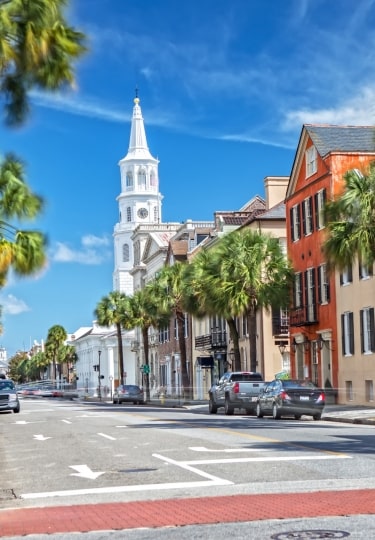Founded in 1670 and packed with old-world charm, the South Carolina city of Charleston is one of the most historic gems in the U.S. Its historic downtown is a maze of cobblestone streets lined with antebellum houses, elegant museums, fine restaurants, stylish bars and cafés, and so many church steeples that Charleston has gained the nickname “The Holy City”.
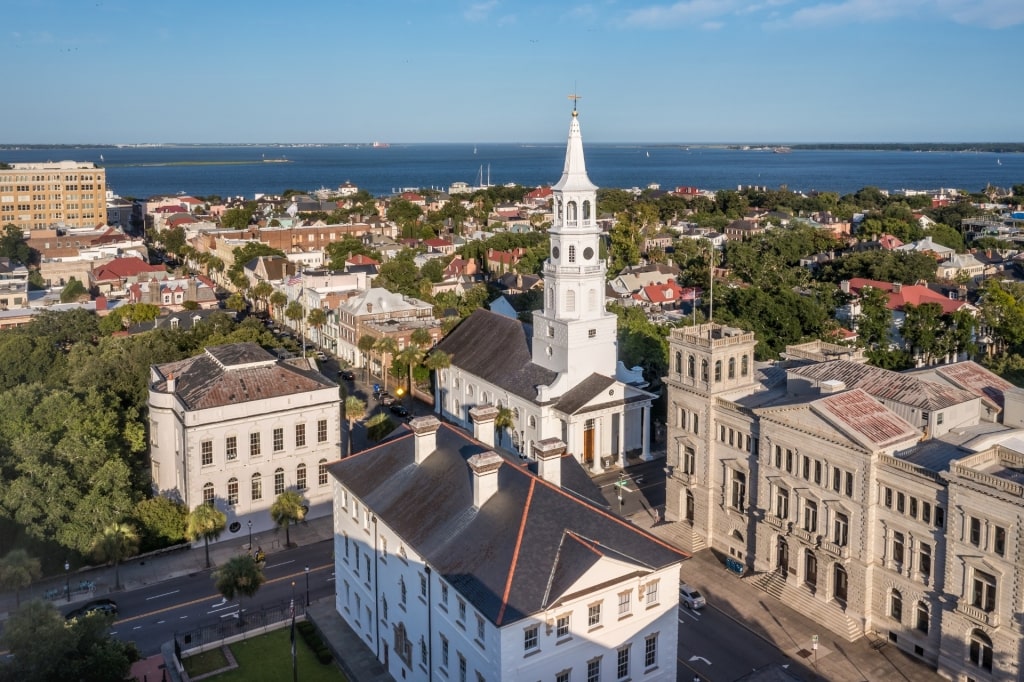
Charleston
The city is much more than the sum of its many historic sites, though. A hefty dose of Southern hospitality can be found at every welcoming turn. Charleston is a city that you experience with every sense, whether that involves being deeply moved by the stories of the Old Slave Mart, getting down and dirty with some oyster shucking by the waterfront, or simply walking the historic streets.
With so much to see and do, you could easily spend a week here. But if you just have one day in Charleston, here are some of the best experiences this seductive southern belle has to offer.
8 a.m.: Breakfast at Toast All Day
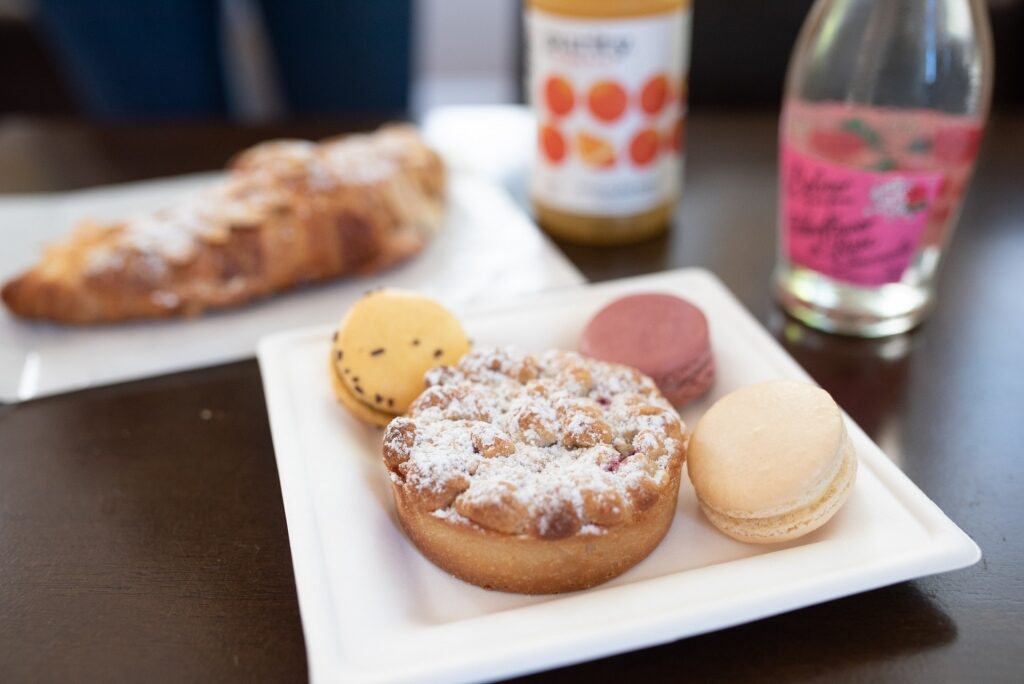
Pastries
Food is almost a second religion in Charleston with many of the city’s chefs and restaurants regularly winning awards and gaining media accolades thanks to a mix of European, Caribbean, and West African influences.
Start the day, then, at one of Charleston’s best-loved eateries, Toast, where the breakfast/brunch offerings are exceptional. Visitors can sample a Lowcountry omelet with blue crab and shrimp accompanied by creamy Carolina stone-ground grits, or tuck into their take on the classic eggs Benedict.
For those looking to fuel themselves for the full day, and possibly beyond, the deluxe stuffed French toast topped with whipped cream gains rave reviews among those who dare to try it. All this should be washed down, of course, with a tangy mimosa cocktail, especially if visiting for brunch.
Toast has three branches around the city itself and three more in surrounding suburbs, but the flagship Meeting Street restaurant is the most convenient when you’re on a tour of the city center.
9 a.m.: Tour the French Quarter and Waterfront Park
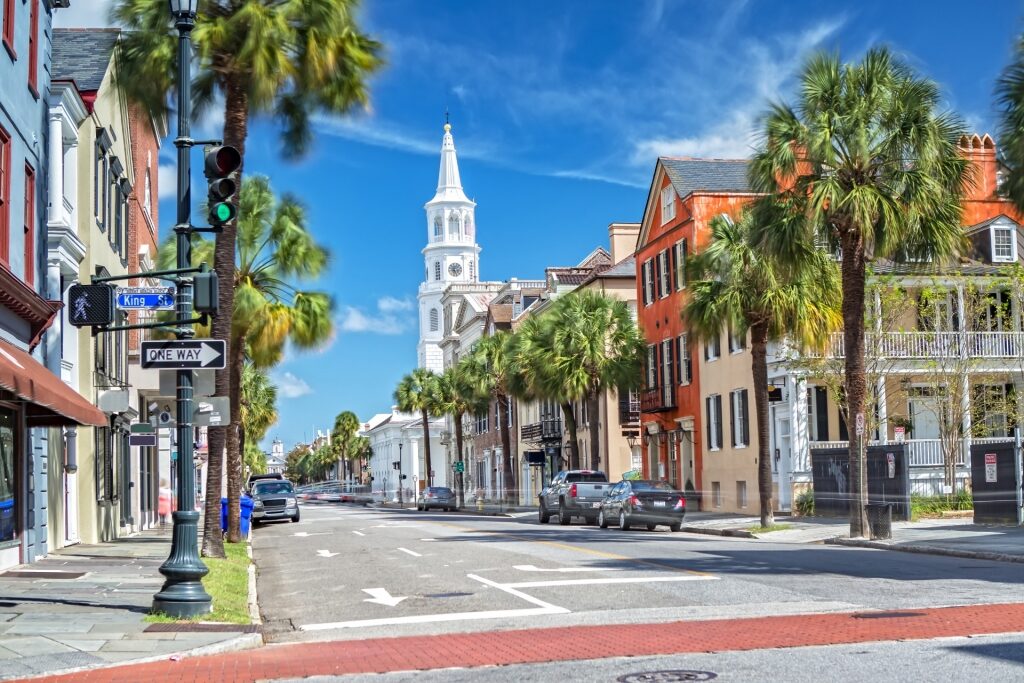
French Quarter
A block to the east of Toast on Meeting sees the start of one of Charleston’s most colorful and historic areas, the French Quarter.
Part of the city’s wider five-neighborhood Historic District and within what would have been the original walled city, the area takes its name from the high number of French Huguenot merchants who once lived here.
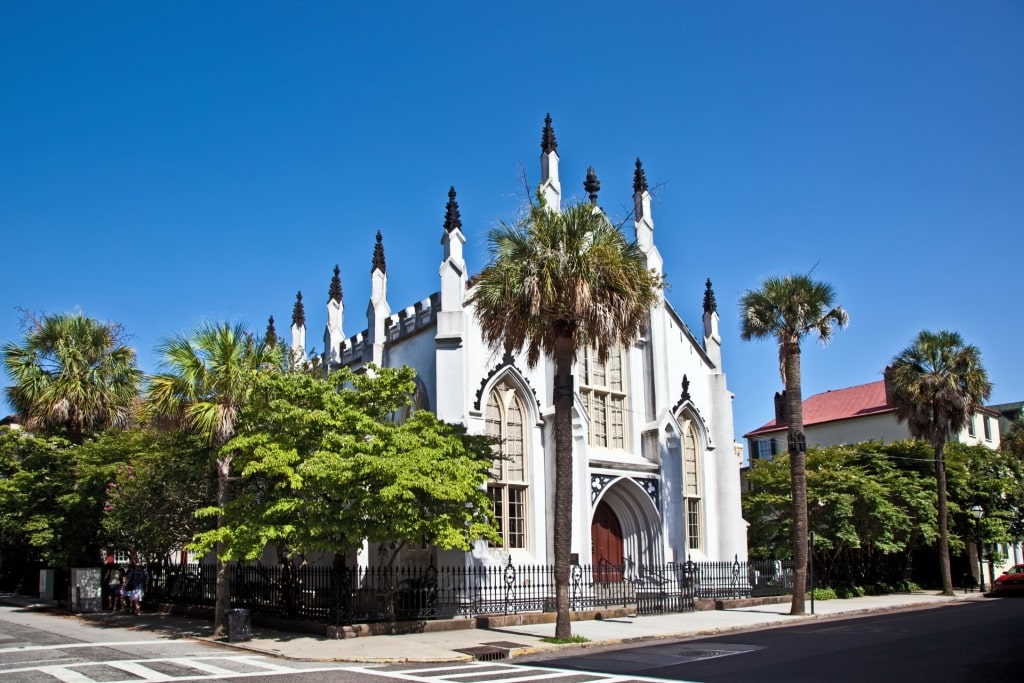
French Huguenot Church
Added to the National Register of Historic Places in 1973, The French Huguenot Church, originally built in 1687, and the Circular Congregational Church—home to the city’s oldest graveyard, dating from 1695—should be on any itinerary, as should the Old Slave Mart Museum on Chalmers Street.
Housed in an antebellum building dating from 1859, the museum offers emotive stories from the days when some 40 percent of slaves arriving in America passed through Charleston. It’s staffed mainly by people whose family history dates back to those most troubling times.
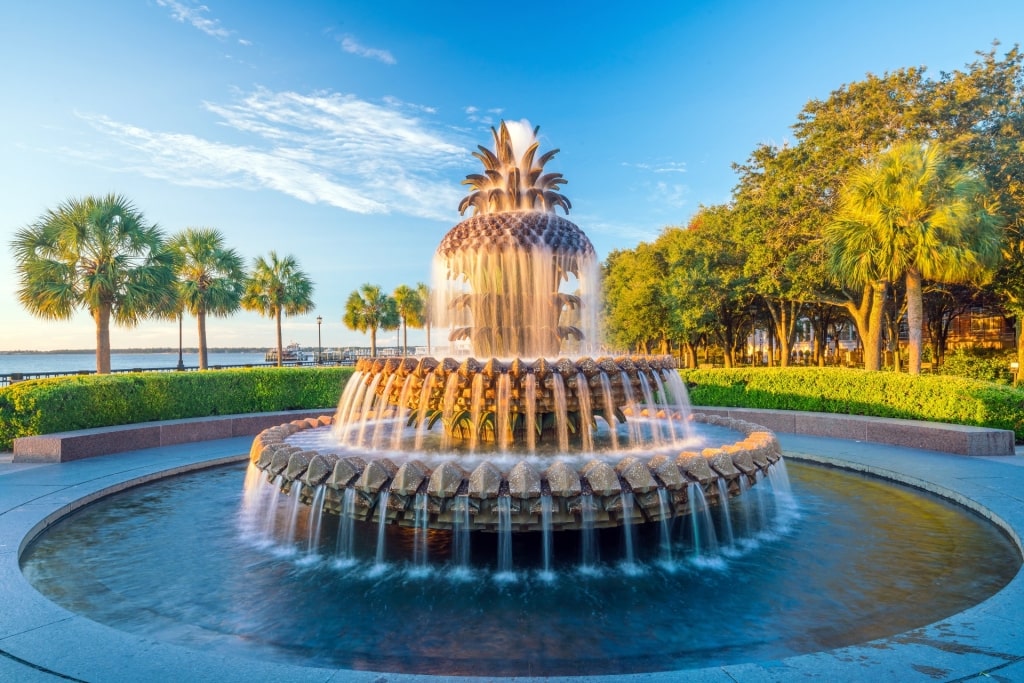
Waterfront Park
The French Quarter culminates at the 10-acre Waterfront Park that overlooks the Cooper River and gained international acclaim for its forward-thinking rejuvenation of a former derelict part of the city.
In the 18th and 19th centuries, the docks here would have been the bustling epicenter of the waterfront area, but decline set in following the Civil War and the opening of other East Coast ports.
A 1955 fire at a steamship terminal put the area into steep, long-term decline until the late 1970s when plans were made to renovate the waterfront, leading to the eventual opening of the park in 1990.
Now, it consists of relaxing shaded areas and waterfront boardwalks, while its famed palmetto tree fountain is one of the most photographed sights in the city. Take a stroll here and enjoy the incredible views out across the city’s harbor, towards the former Federal stronghold Fort Sumter.
11 a.m.: Explore the Business District and the Homes South of Broad
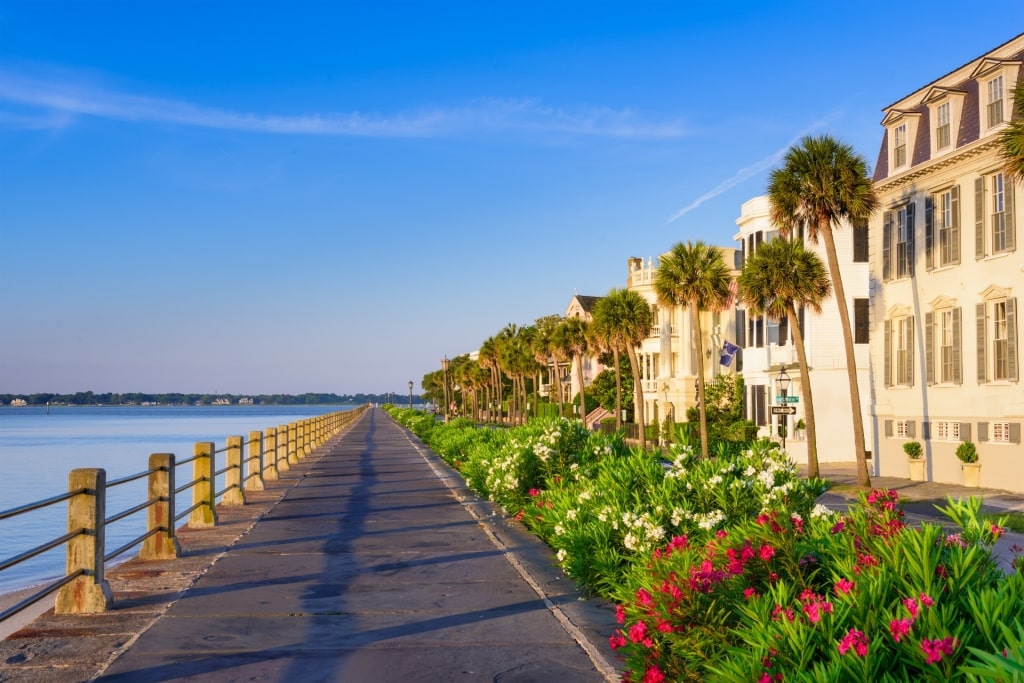
The Battery
West of the French Quarter is the Business District, also known as the Fashion District. This part of town is home to some of the city’s best antique shops, ideal for seeking out furniture, china, and art that dates back to the 1700s and no doubt features highly in the plush homes in the Historic District’s most prestigious neighborhood, South of Broad.
Here, the cobblestone streets that lead down to The Battery are lined with elegant antebellum mansions and perfectly manicured gardens, making Charleston one of the most romantic getaways on the East Coast. While many of them are residential, several have been turned into museums.
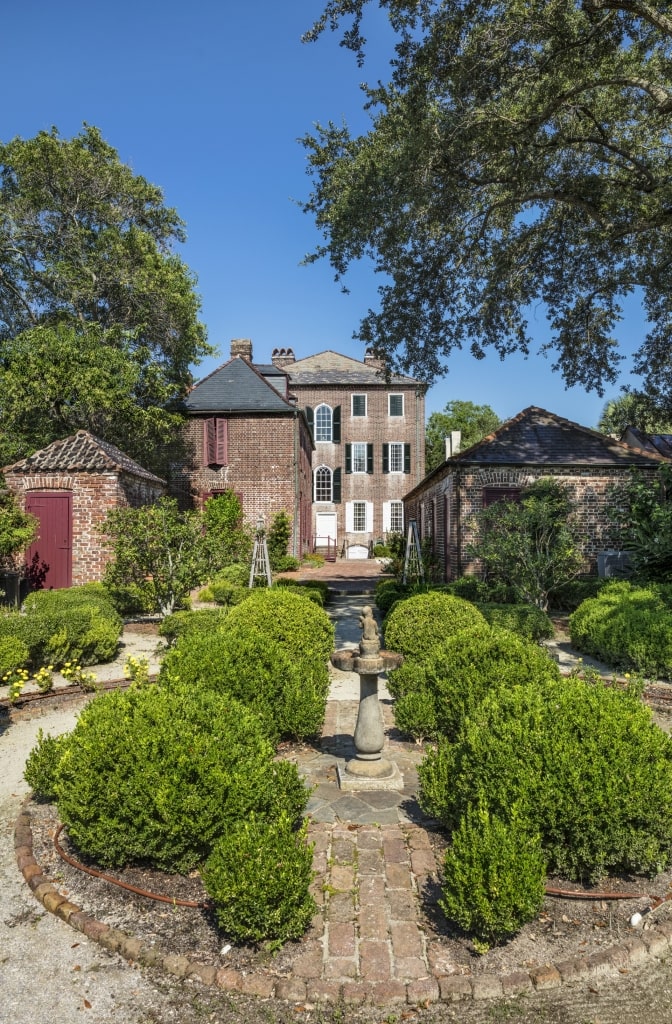
Heyward-Washington House
Heyward-Washington House at 87 Church Street dates from 1772 and was home to Thomas Heyward, Jr, a signatory of the Declaration of Independence. It was also the place where George Washington stayed when he visited Charleston in 1791.
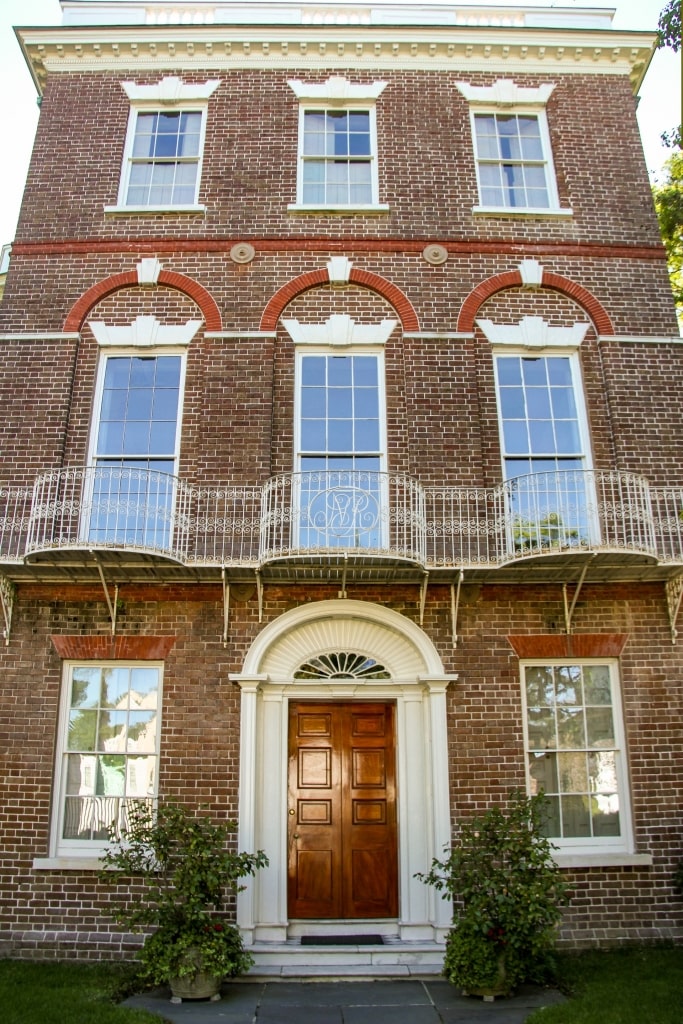
Nathaniel Russell House
A block over on Meeting Street is Nathaniel Russell House, a Grand Federal mansion dating from 1808 designed by the merchant and slave trader to be one of the finest in the country.
Featuring magnificently restored interiors and period antiques, its defining feature is an incredible three-story flying staircase where each cantilevered step supports both the ones above and below it.
Many of the homes here have fine gardens, but most are not open to the public, with the exception of Mrs. Whaley’s Garden at 58 Church Street. Emily Whaley and her husband, Ben Scott Whaley, purchased the 18th-century Charleston Single House here in 1938. They employed landscape architect Loutrel W. Briggs to design what is now claimed to be the most visited private garden in the U.S.
Entry to the garden is available on Thursdays, Fridays, Saturdays, and Sundays, simply by posting a $10 bill in the house’s mailbox to help with garden upkeep. The garden is relatively small—just 110 feet by 30 feet—but provides a tranquil place in which to rest your weary legs after a morning’s walking.
While relaxing on one of the chairs, make sure to take in the garden’s focal point, a statue of a woman looking into a shallow reflecting pool.
1 p.m.: Shopping and Lunch in Historic Charleston City Market
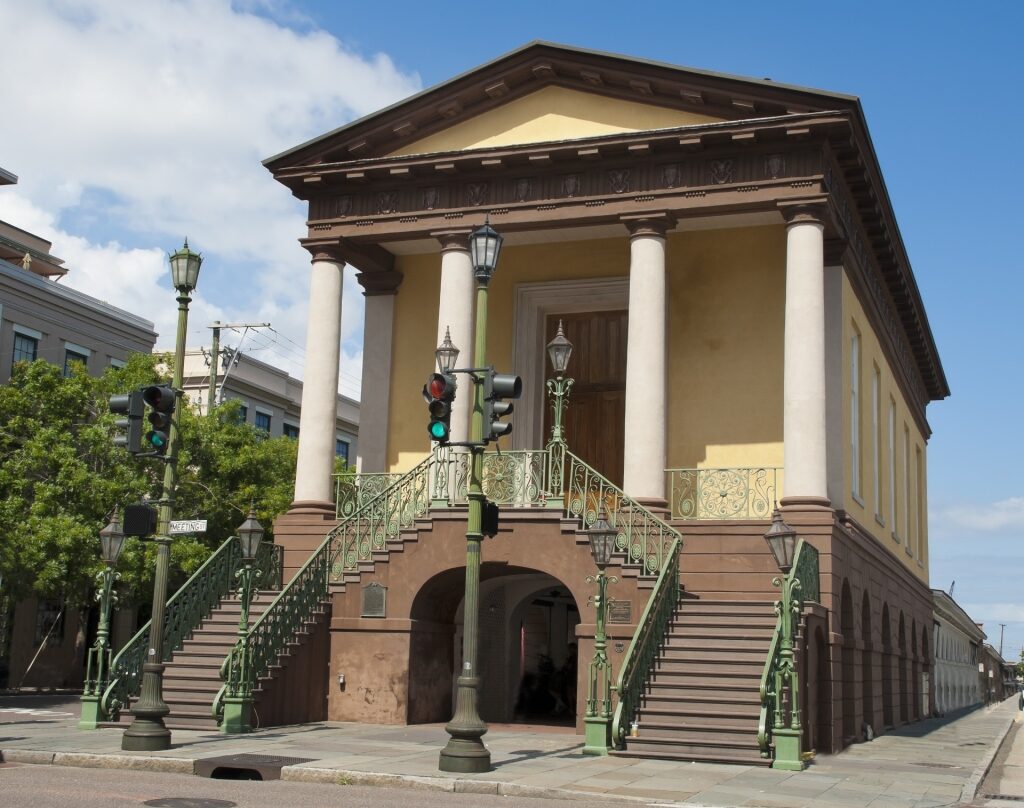
Charleston City Market
Serious souvenir shopping and dining opportunities aplenty can be found in this vast city market that covers four blocks and dates from 1807, making it one of the oldest markets in America.
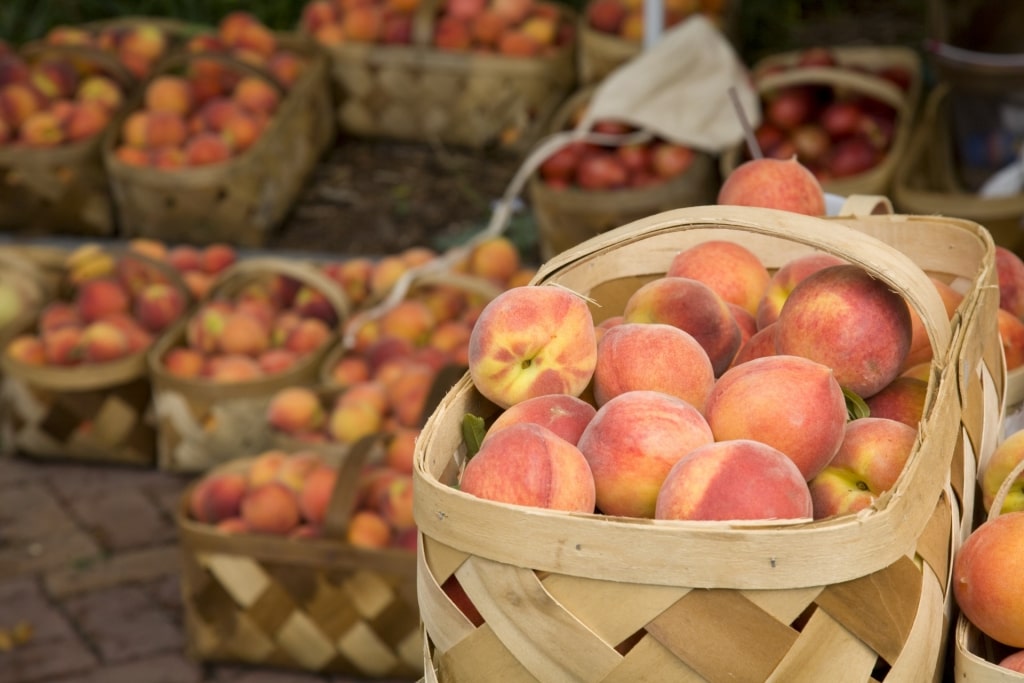
Fresh produce
Listed on the National Register of Historic Places and subject to a multi-million dollar makeover in 2010, it consists of a Great Hall and open-air stalls on the surrounding streets. Here, some 300 businesses offer a wide range of jewelry, homeware, collectibles, fine art, and much more.
Look out for goods bearing the Certified Authentic Handmade in Charleston, a special designation awarded by the market to promote local businesses selling items such as sweetgrass baskets. There are around 50 vendors in the market and surrounding streets who hand-weave these unique gifts from locally-harvested bulrushes.
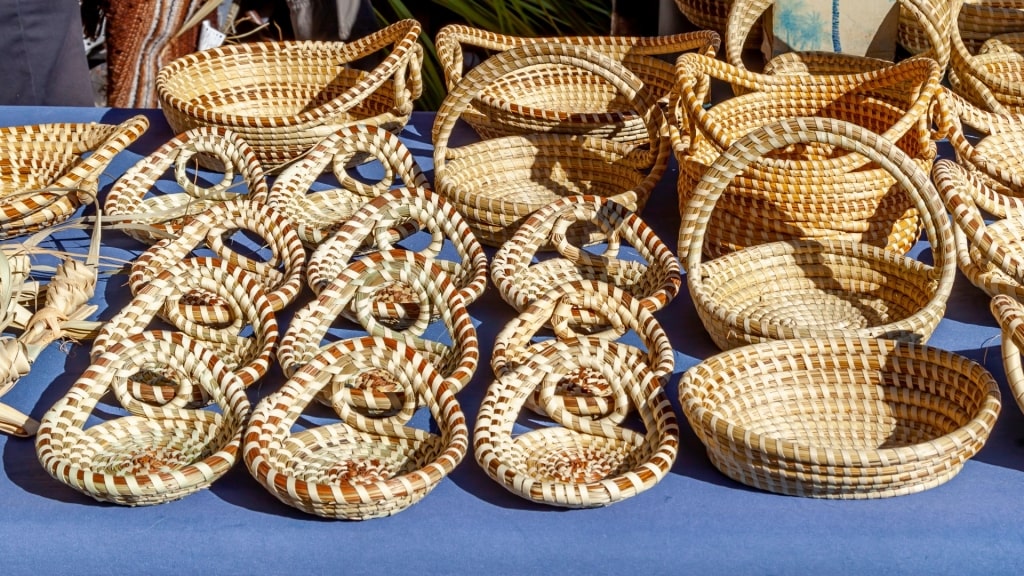
Sweetgrass baskets
These skilled artisans use age-old traditions that arrived in America via slaves from West Africa and that have since been passed down from generation to generation.
The market is home to two eateries in which you can replenish following a morning of exploring Charleston’s best shopping. Callie’s Hot Little Biscuit is a grab-and-go spot serving award-winning biscuits, pimento cheese sandwiches and other lunch items, while City Market Grocery is a gourmet coffee shop and deli.
Read: Underrated Honeymoon Destinations
2.30 p.m.: Sail Out to Fort Sumter
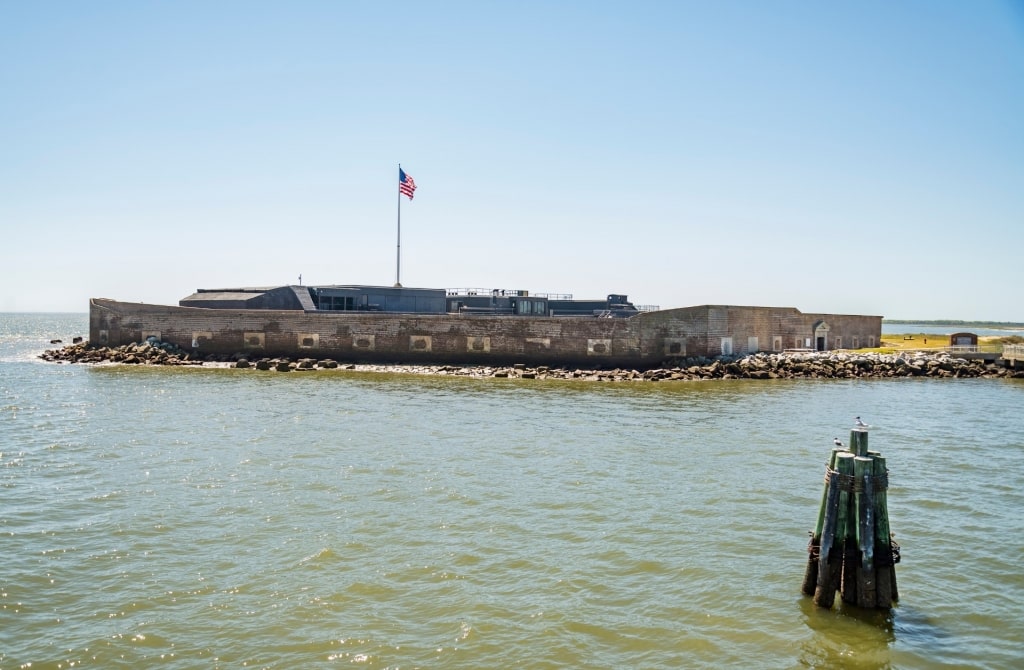
Fort Sumter
Originally a sea fort built on an artificial island to protect Charleston from naval invasion after the British took Washington from the ocean in 1812, Fort Sumter saw the first shots of the American Civil War fired on April 12 and 13, 1861, as the South Carolina militia bombarded the Federal site.
The battle was instigated following the secession of South Carolina the previous December and the refusal of the US Army to abandon the facility.
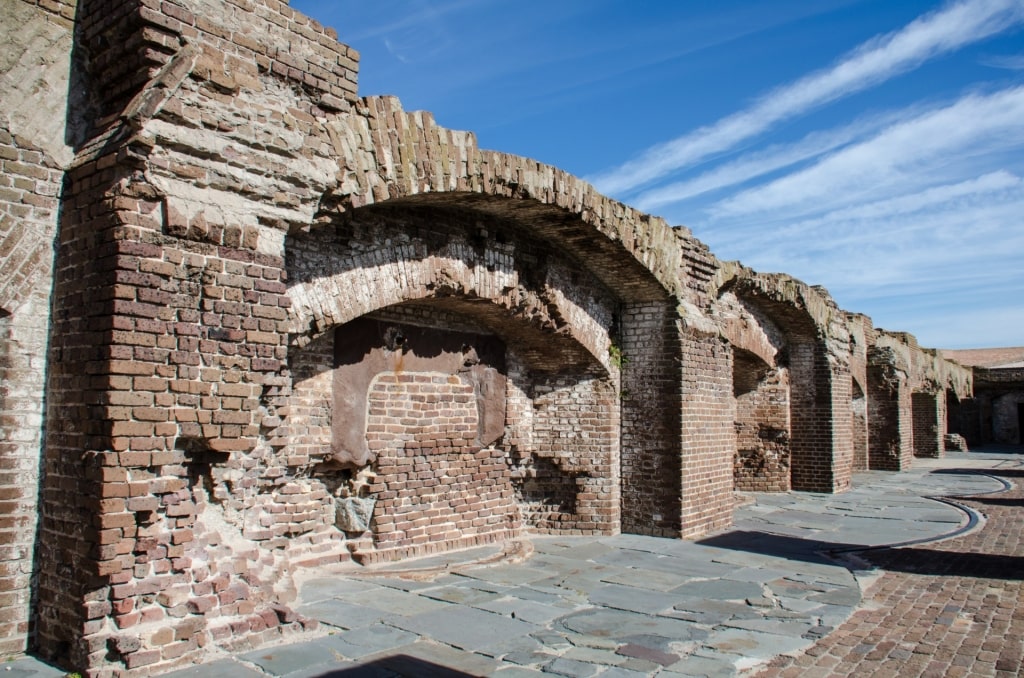
Fort Sumter
The militia’s bombardment of the fort was so violent it prompted the army’s surrender within 24 hours and marked the beginning of four years of hostilities between the Union and the Confederacy.
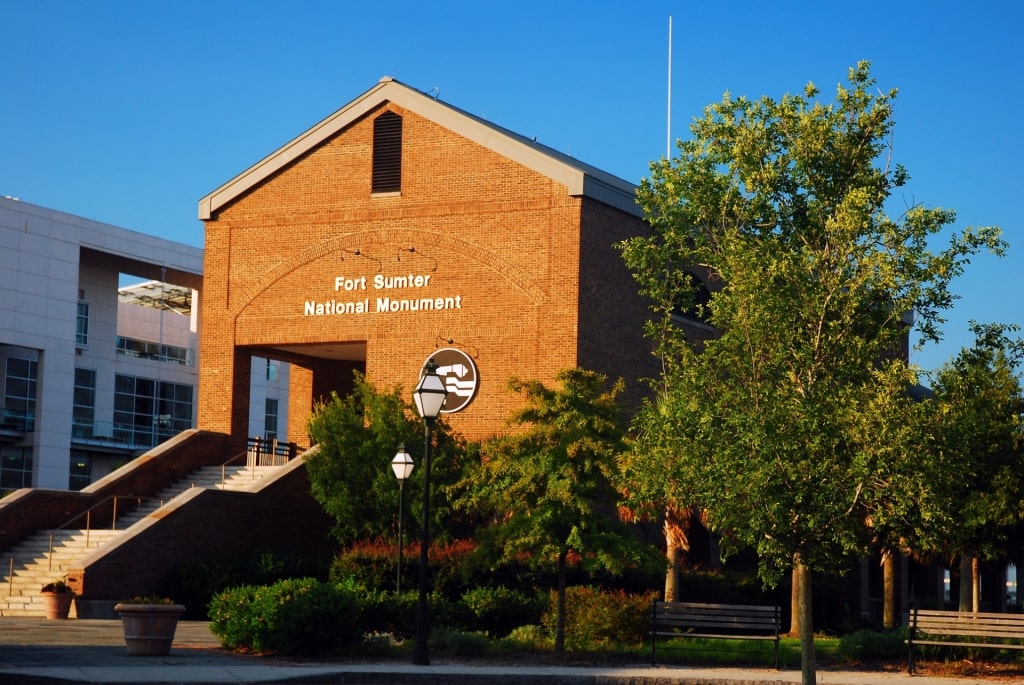
Fort Sumter Visitor Education Center
The story is brilliantly told in detail at the Fort Sumter Visitor Education Center in Liberty Square, which is also one of the two sailing points for the short ferry ride across Charleston Harbor to the Fort itself. Make sure to look out for dolphins and sailboats along the way.
Once on the island, park rangers relay more stories from the fateful battle, including that of a sergeant who raised a shell-ripped flag during the attack. Explore the fort’s well-preserved ruins and visit the museum store before the boat returns Downtown. Allow around two and a half hours for the whole experience.
6 p.m.: Take a Ghost Tour
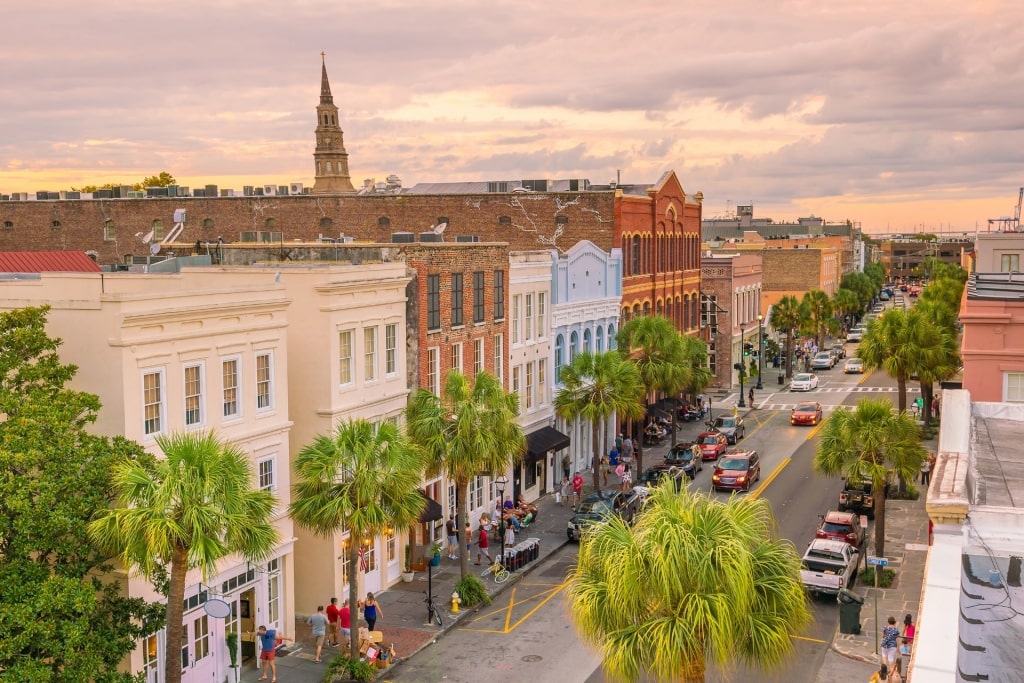
Charleston
Charleston’s historic past featuring war, slavery and natural disasters makes it a prime place for tall tales of the supernatural and unexpected. As such, jumping on a ghost tour is a fun alternative way to delve deeper into the city’s legends for both believers and skeptics alike.
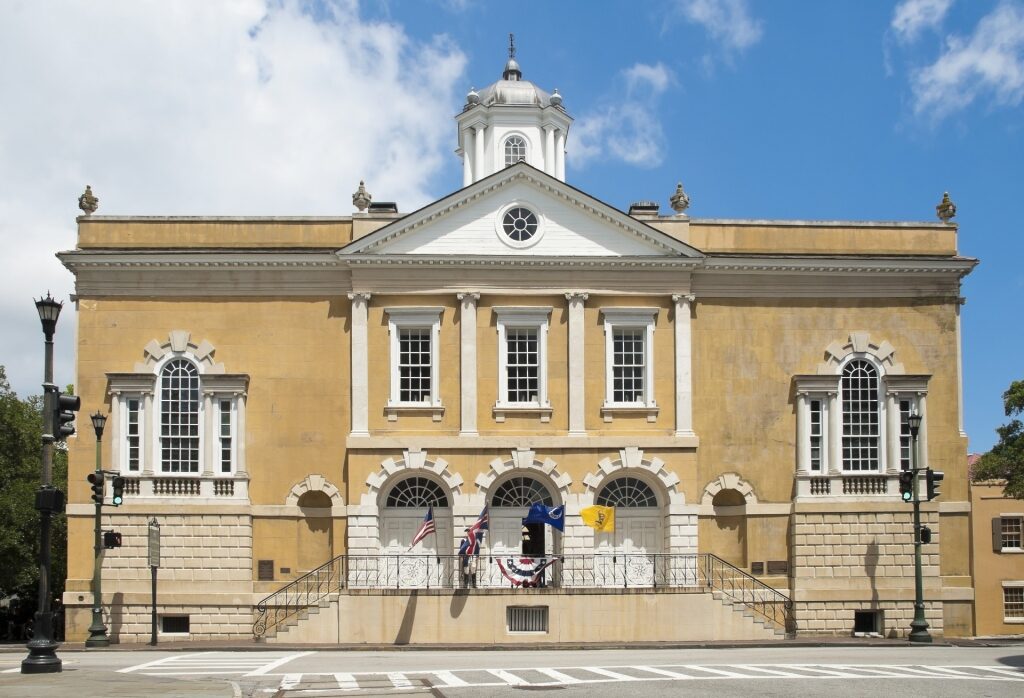
Old Exchange & Provost Dungeon
Sites some of the tours visit include the jail cells of the Old Exchange & Provost Dungeon which dates from 1767 and was used by the British as a prison during the American Revolution.
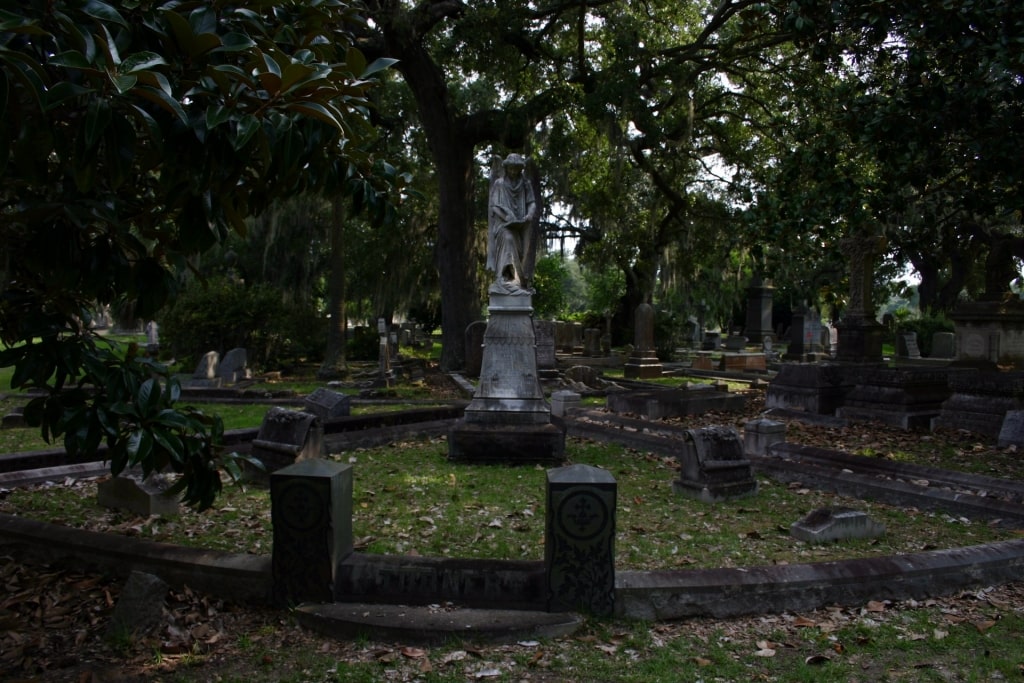
Magnolia Cemetery Photo by Chey Dubia on Wikimedia Commons, licensed under CC BY-SA 4.0
You could also visit the city’s beautiful Victorian graveyards and cemeteries, including the Magnolia Cemetery. Set on a former plantation and dating from 1849, it is home to the remains of more than 35,000 people, including soldiers, artists, and authors.
More spooky stories can also be had on the 1943 aircraft carrier USS Yorktown, known as the Fighting Lady in her heyday, when she was manned by more than 3,000 people as she took on the nation’s enemies during World War II.

Horse-and-carriage ride in Charleston
Most tours are offered on foot, but a Downtown ghost tour can be combined with one of Charleston’s other attractions, a horse-and-carriage ride.
These 40-minute twilight tours offer a quick but fascinating insight into the ghosts of Charleston’s rich past as told by expert guides. Their tales are accompanied by the sound of hooves on the cobbles to add to the spooky atmosphere.
Read: Haunted Places to Visit Around the World
7 p.m.: Dine at Hank’s Seafood Restaurant
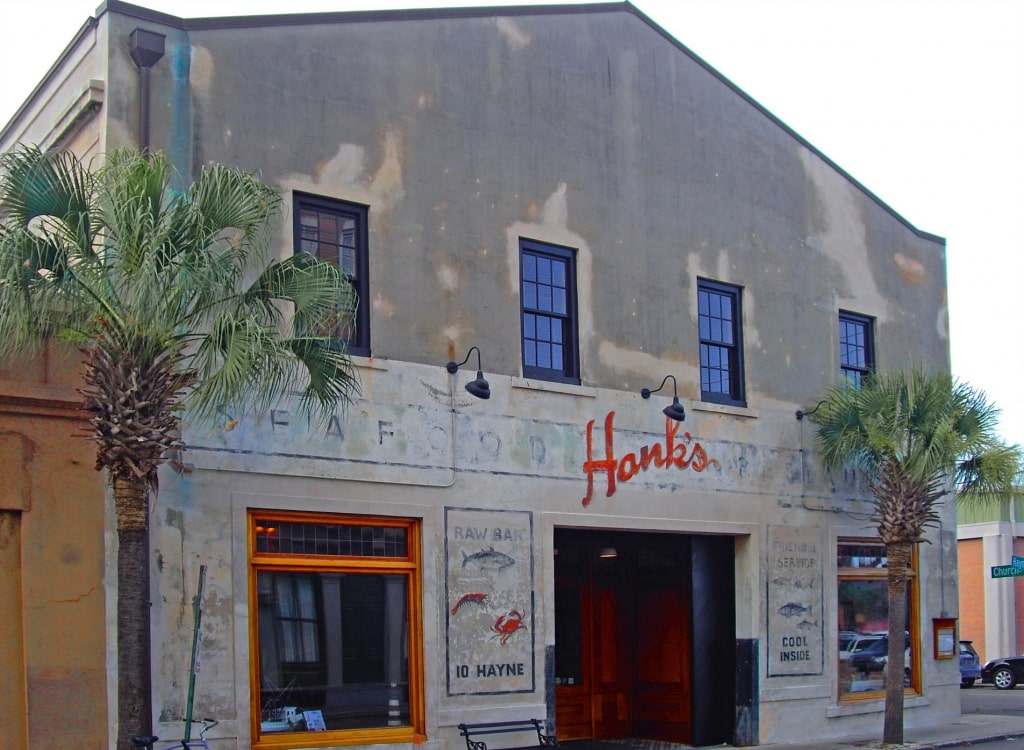
Hank’s Seafood Restaurant Photo by Ron Cogswell on Flickr, licensed under CC BY 2.0
Set in a turn-of-the-century converted warehouse opposite Historic Charleston City Market, Hank’s is one of Charleston’s quintessential dining experiences and regularly tops lists of the best seafood restaurants in town.
The dining area has a buzzy, clubby feel to it, with warm wood décor, an old-fashioned saloon bar and wait staff in white tuxedos.
An exhibition raw bar means you get to see what you’re eating, whether that be ceviche marinated in lime juice, cilantro and jalapeños, or the famed Charleston classic oyster samplers.
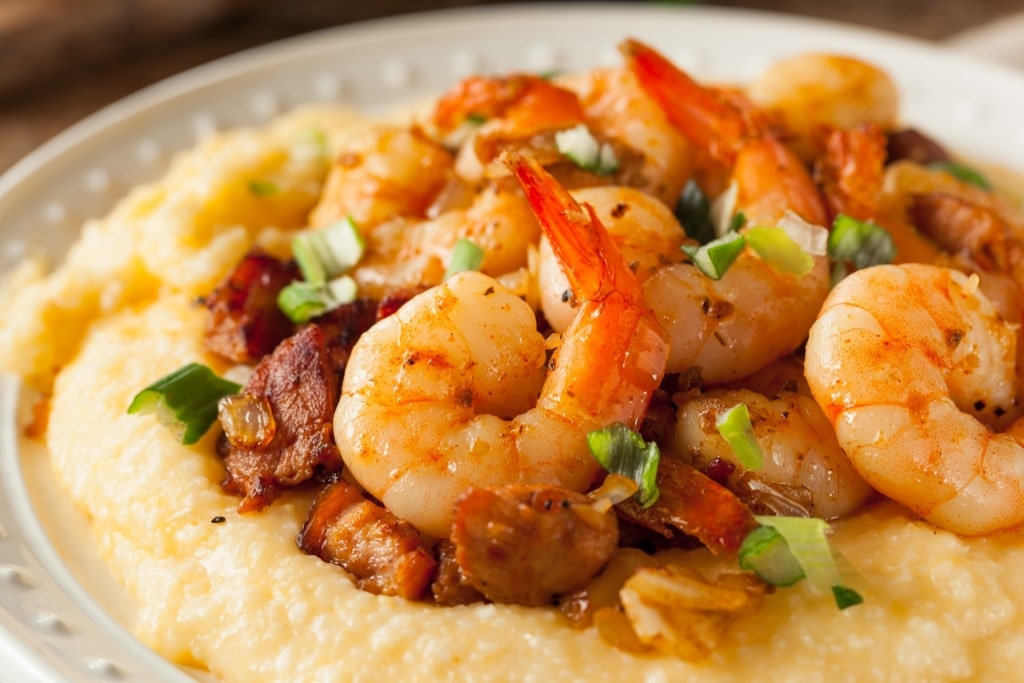
Shrimp and grits
Other menu highlights include the Southern favorite, shrimp and grits, as well as rare seared tuna with cauliflower and goat cheese croquettes, or magnificent seafood towers. Perhaps a unique feature of dining here is the fact that if you’re a solo diner there’s no need to eat alone thanks to a “community” dining table.
9 p.m.: A Nightcap on King Street
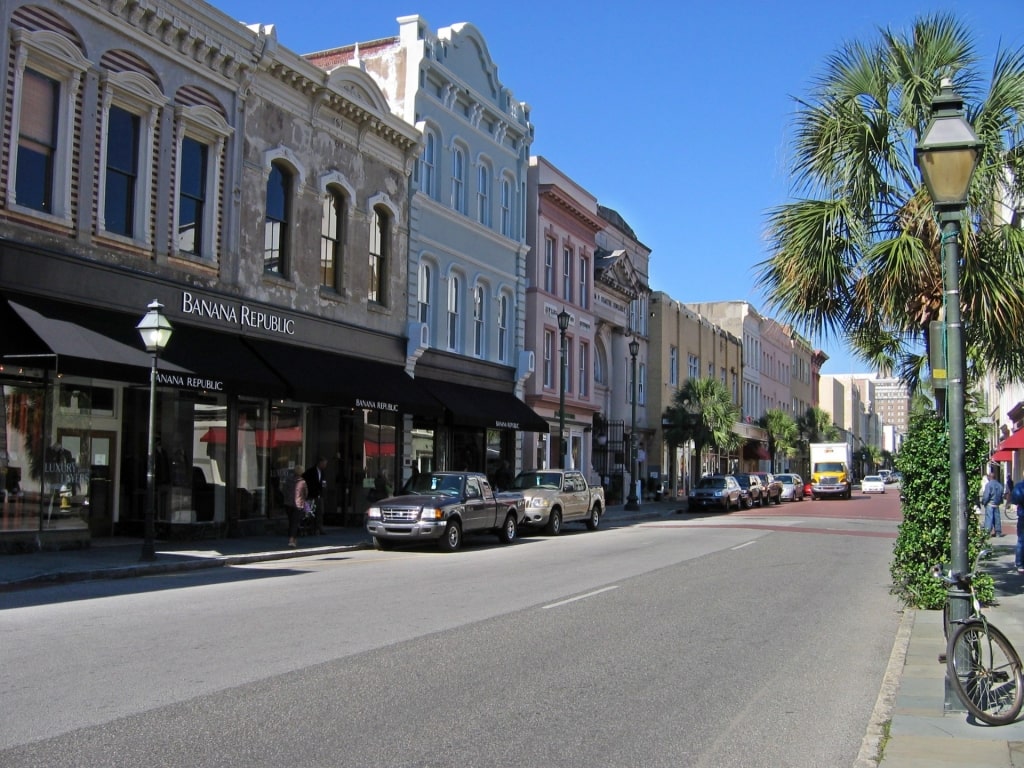
King Street Photo by AudeVivere on Wikimedia Commons, licensed under CC BY-SA 2.5
If there’s still life in the legs, take a walk along King Street, north of Marion Square, where there’s a selection of bars to suit all tastes.
Listen as the best pianists in town duke it out at the John King Grill & Dueling Piano Bar, catch up with the latest sports over a pint of craft beer at Charleston Beer Works, or sip on sumptuous cocktails at the 1920s-themed Prohibition.
Read: Best Breweries in Charleston
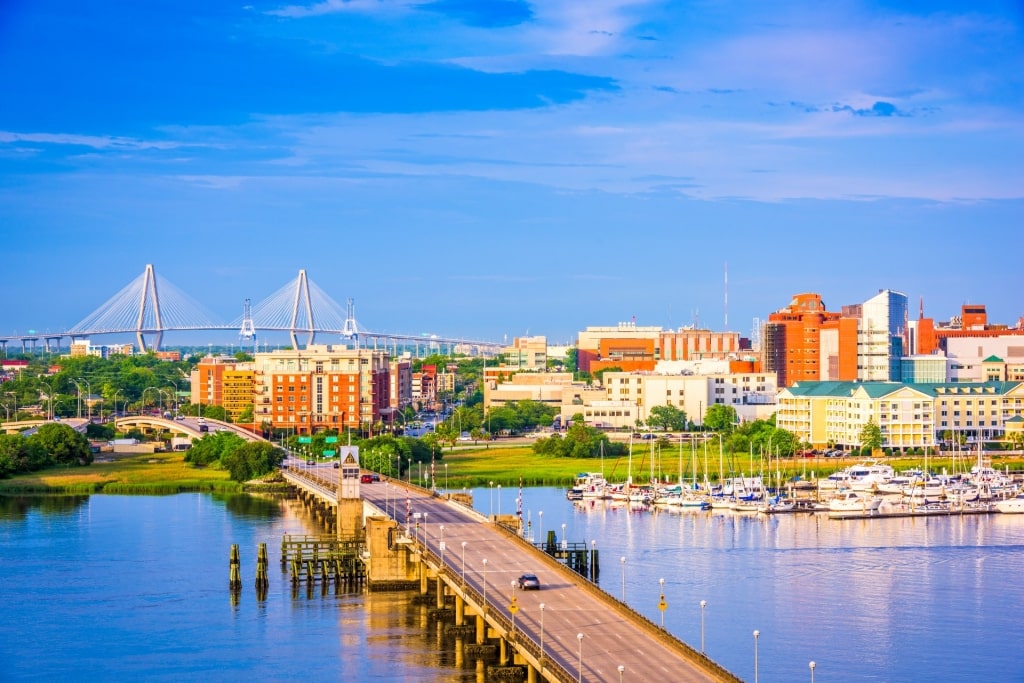
Charleston
Are you seduced by the idea of Charleston’s southern charm? Browse our cruises to Charleston and book your dream vacation.
